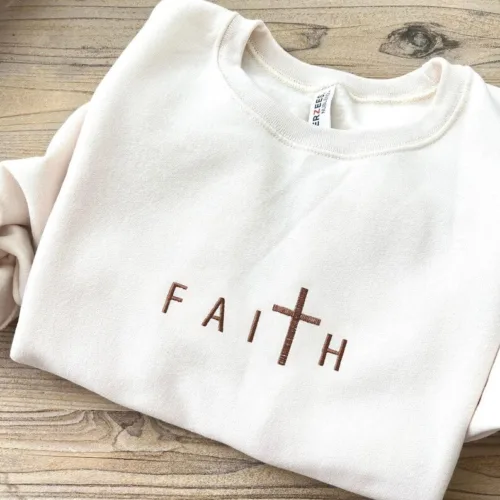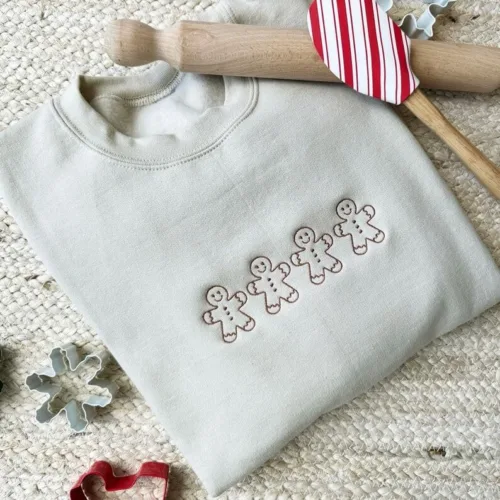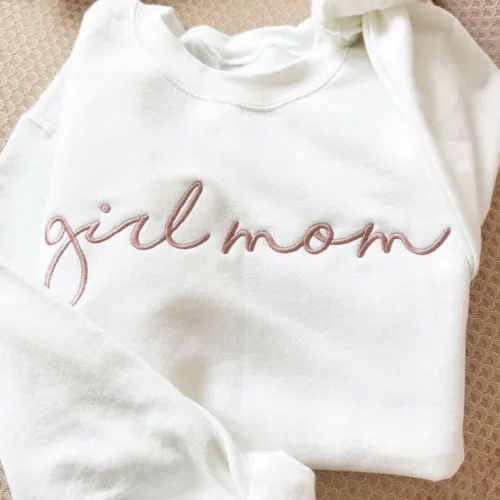The best discounts this week
Every week you can find the best discounts here.
Personalized Embroidered Hat, Custom Text, Custom Logo, Custom Your Image
Personalised Vintage Cap – Custom Embroidered Unisex Cotton Dad Hat with Personalized Text
Personalized Embroidered Cat Hat, Custom Dog Hat, Custom Hat Vintage Baseball
Custom Embroidered FAITH Crewneck Sweatshirt
Gingerbread Men Embroidered Sweatshirt
Girl Mom Personalized Crewneck Sweatshirt

Table of Contents
Modern Machine Embroidery
Quotes to Inspire His Dreams
Machine embroidery represents a major leap forward in the world of textile decoration, combining technology with creativity. This automated technique allows you to produce intricate, detailed designs on fabric with speed, accuracy, and repeatability — a perfect blend of art and innovation.
Why Choose Machine Embroidery?
Machine embroidery offers several advantages over traditional hand stitching:
Increased productivity – Complete designs in minutes that would take hours by hand.
Precision and consistency – Every stitch is uniform, even in the most detailed patterns.
Endless design potential – From elegant monograms to complex, multi-color patterns, your imagination is the limit.
Whether you’re decorating clothes, personalizing gifts, or launching a small business, machine embroidery provides the tools to bring your ideas to life with professional results.
What This Guide Covers
This beginner-friendly guide will walk you through the essentials of machine embroidery, including:
The basic tools and supplies you’ll need
Choosing the right embroidery machine
Understanding file formats and design software
Tips for hooping and stabilizing fabric
Common mistakes to avoid and how to troubleshoot
By the end, you’ll have a solid foundation to confidently start your embroidery journey and explore the creative possibilities this craft has to offer.
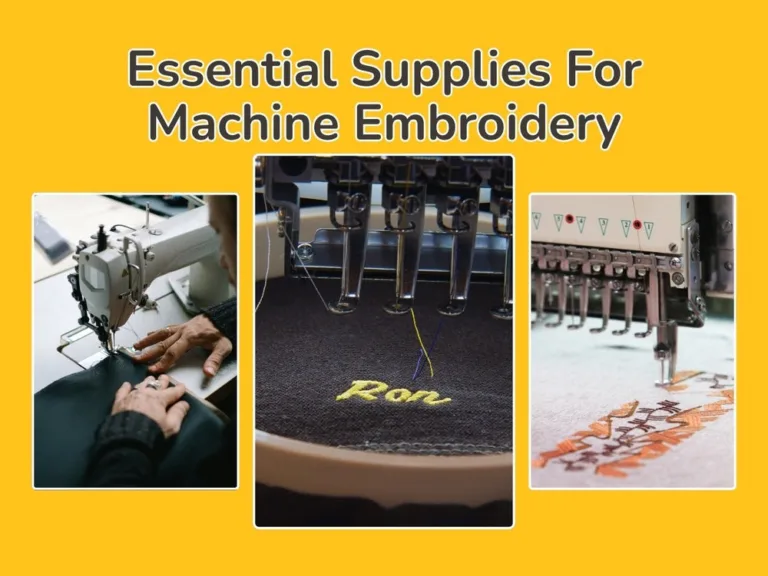
Essential Gear for Machine Stitching
Before you begin your embroidery journey, it’s important to have the proper tools and materials in place. Let’s explore the must-have items that will set you up for embroidery success.
Types of Machines for Embroidery
Choosing Your Embroidery Machine
The embroidery machine is the cornerstone of your craft, so selecting the right one is essential. Your choice should reflect your skill level, creative goals, and the type of projects you plan to pursue.
Single-Needle Machines
Ideal for beginners
Easy-to-use interface and compact size
Perfect for small-scale or personal projects
Multi-Needle Machines
Designed for advanced users
Great for high-volume or commercial embroidery
Can handle multiple thread colors without constant rethreading
What to Consider When Buying a Machine
Your budget
The complexity and size of your projects
Your readiness to learn more advanced features
Where to Buy Your Machine and Supplies
When purchasing, it’s best to stick with reputable retailers—especially those recommended within the embroidery community. For popular brands like Brother, Janome, or Bernina, trusted sites include:
SewingMachinesPlus
AllStitch
Ken’s Sewing Center
These retailers often provide solid customer support and user reviews.
If you’re considering a second-hand machine, platforms like Meissner Sewing and LindaZ’s are good starting points—just make sure to verify the machine’s condition and the seller’s reputation.
For real-user feedback and tips, embroidery communities such as Reddit’s r/MachineEmbroidery and Sewing Pattern Review are excellent resources.
Must-Have Tools
Once you’ve selected your embroidery machine, it’s time to gather the tools and materials that will bring your designs to life. Here’s a breakdown of the core supplies every beginner needs:
Thread Varieties and Colorways
Embroidery thread is your main creative tool, and the type you choose affects both appearance and durability. Start with these popular options:
Polyester thread – Durable and colorfast, ideal for everyday projects
Rayon thread – Offers a silky finish and rich color
Metallic thread – Adds shimmer for decorative or festive designs
Pro Tip: Begin with a basic color palette. As you grow more confident, your thread collection will naturally expand to suit new designs and challenges.
Choosing the Right Needles
Needles may seem simple, but they make a big impact on your results. Keep these points in mind:
Needle size: Smaller sizes for lightweight fabrics; larger sizes for heavy materials
Needle type: Embroidery needles are designed with a larger eye to minimize thread friction
Don’t forget: Replace your needle regularly—fresh needles help improve stitch quality and protect your fabric.
Stabilizers for Fabric Support
Stabilizers prevent distortion and puckering while you stitch. Here are the main types to keep on hand:
Cut-away stabilizer – Best for knits and stretchy fabrics
Tear-away stabilizer – Ideal for stable woven materials
Water-soluble stabilizer – Use when you want the stabilizer to completely disappear after stitching
Support Tools and Accessories
The right tools make the process smoother and more precise. Stock your kit with:
Precision scissors – For trimming threads close to the fabric
Seam ripper – Everyone makes mistakes—this tool will save your project
Tweezers – Helpful for grabbing thread ends and adjusting small details
Designs to Stitch
Selecting Embroidery Designs
One of the most enjoyable parts of embroidery is choosing the designs you’ll bring to life. Whether you’re stitching a gift, a piece of clothing, or home décor, the design sets the tone for your entire project.
You can source designs in several ways:
Use pre-installed designs – Most embroidery machines come with built-in patterns perfect for practice.
Purchase designs online – Explore platforms like Etsy, Creative Fabrica, or EmbroideryDesigns.com for endless creative options.
Create your own – If you’re feeling adventurous, digitizing software lets you turn your original artwork into custom embroidery files.
Start Simple: Designs for Beginners
When you’re just starting out, it’s best to keep things simple. Look for designs that are:
Geometric – Clean lines and shapes help you master control
Monograms – A great introduction to lettering and detail
Basic floral patterns – These teach common stitch types in a manageable way
Tip: Simple doesn’t mean boring—many basic designs are elegant, stylish, and incredibly satisfying to complete.
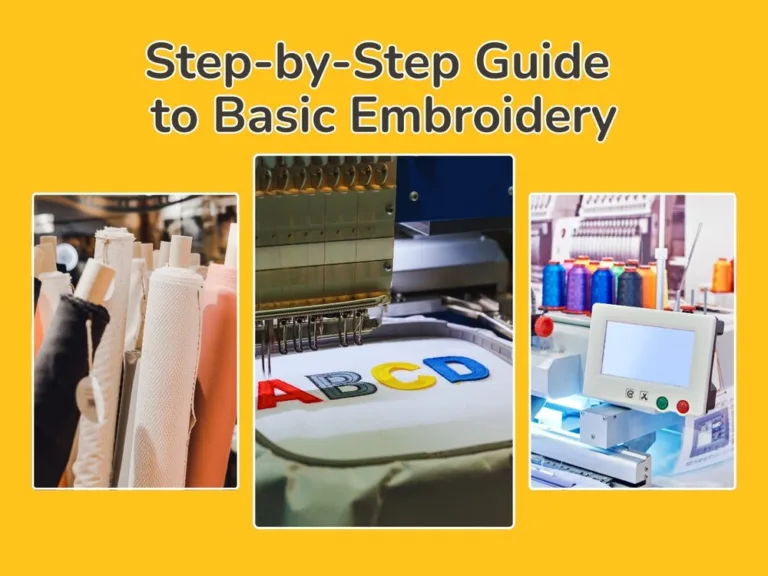
Beginner Embroidery Guide
Now that you’ve gathered the basics, it’s time to dive into your first embroidery project. I’ll walk you through each stage, offering helpful tips I’ve picked up along the way. Everyone begins as a beginner, so don’t worry if it feels a little intimidating at first.
Start with the Right Fabric
Let’s start by preparing your fabric for its embroidery debut.
Cutting to size:
Measure your embroidery hoop, then add about 2 inches on each side.
Use sharp scissors to ensure clean, even edges.
Ironing for a smooth surface:
Gently press both sides of the fabric with an iron.
Skip the steam setting—dry heat helps prevent warping.
Pro tip: A smooth, wrinkle-free fabric sets the stage for sharp and polished embroidery results.
Apply Before You Stitch
Think of the stabilizer as your fabric’s behind-the-scenes hero. Here’s how to put it to work:
Choose Your Stabilizer:
Cut-away: Best for knits and stretchy fabrics.
Tear-away: Ideal for woven, stable fabrics.
Water-soluble: Perfect when you don’t want any stabilizer showing on your final project.
Attach the Stabilizer:
- For cut-away and tear-away: Place it behind your fabric.
For water-soluble: Place it on top of your fabric.
How to Hoop Fabric
Proper hooping is essential for achieving professional results. Here’s how to do it:
Loosen the outer hoop and place your fabric and stabilizer on the inner hoop.
Press the outer hoop down, securing the layers in place.
Tighten the screw while gently pulling the fabric taut.
Tip: Aim to make the fabric as tight as a drum, but avoid overstretching it to maintain its shape.
Step-by-Step Threading Guide
Now, let’s prepare your machine for action:
Upper Thread Installation:
Follow your machine’s threading guide carefully.
Ensure the thread is properly seated in the tension disks.
Bobbin Thread Preparation:
Wind your bobbin evenly.
Insert it into the bobbin case, following the thread path as indicated in your manual.
Tip: Take your time with the threading process—proper setup helps prevent issues later on.
Prepare Your Embroidery Pattern
Now it’s time to tell your machine which design you want to create:
Uploading Designs to Your Machine:
Transfer your design via a USB drive or a direct connection, depending on your machine’s capabilities.
Make sure the design is in a format your machine can read and process.
Positioning Your Design:
Use your machine’s display to center and adjust the design as necessary.
Double-check the size to ensure it fits properly within your hoop.
Pro tip: Always preview the design before starting. It’s far easier to make adjustments now than to redo stitches later!
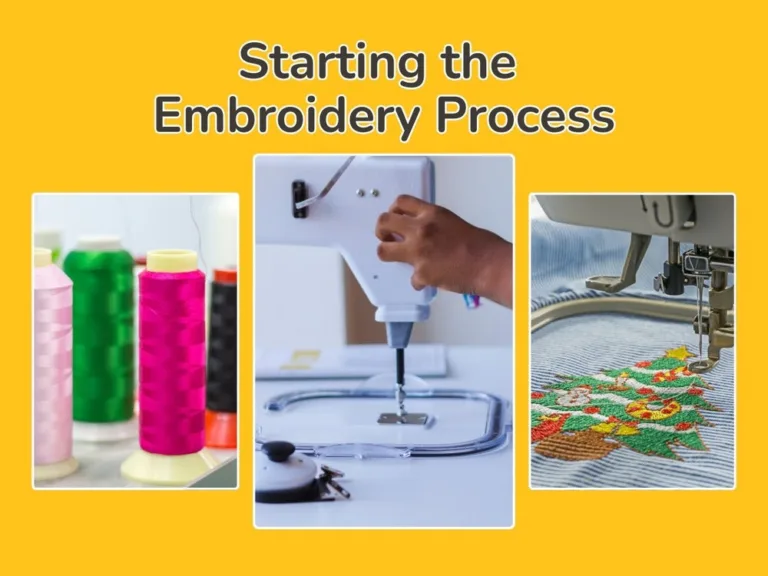
Getting Started with Embroidery
The moment of truth is here—let’s start stitching:
Machine Settings and Adjustments:
Set your stitch speed. For beginners, I recommend starting at a slower pace until you gain confidence.
Make sure the appropriate needle and presser foot are installed.
Needle Suggestions:
Needle Type:
For everyday fabrics like cotton (commonly used in t-shirts and sweatshirts), a 75/11 or 80/12 embroidery needle is ideal. For heavier materials like hats, opt for a sharp needle to ensure clean penetration.Ballpoint Needles:
These are best when working with stretch or knit fabrics to avoid snagging or tearing.Needle Size:
Use smaller needles (like 75/11) for lightweight fabrics, and switch to larger ones (80/12 or 90/14) for thicker textiles.
Keeping an Eye on Progress:
Monitor thread tension regularly and make small adjustments as needed.
Watch closely for signs of trouble—like broken threads or skipped stitches—and pause the machine to fix issues early.
Stitch Density Explained
Text Density:
For smaller text (under 1/4 inch), slightly lowering the stitch density helps avoid bulk. A good range is around 4–6 stitches per millimeter for clear, clean lettering.
Design Density:
For bigger or more detailed designs, increasing the stitch density a bit can improve coverage and create smoother, more polished results.
Underlay Stitches:
Make sure your design includes a solid underlay—this foundation layer helps stabilize the fabric and supports cleaner stitching, especially in dense or large designs.
And remember: don’t hesitate to pause your machine if something seems off. Making small tweaks early can save your project!
Finishing Your Project
Congratulations! You’ve finished your embroidery piece. Let’s wrap things up with the final touches:
Removing the hoop:
Gently release your fabric from the hoop.
If you used a tear-away stabilizer, peel it off with care.
Trimming loose threads:
Grab your precision scissors and trim any jump stitches.
Take your time—avoid snipping into your finished design.
Final pressing:
Iron your embroidery from the reverse side.
Use a pressing cloth to protect the stitches and preserve texture.
Now, step back and admire your creation—you’ve just taken your first leap into the vibrant world of embroidery art and creativity.
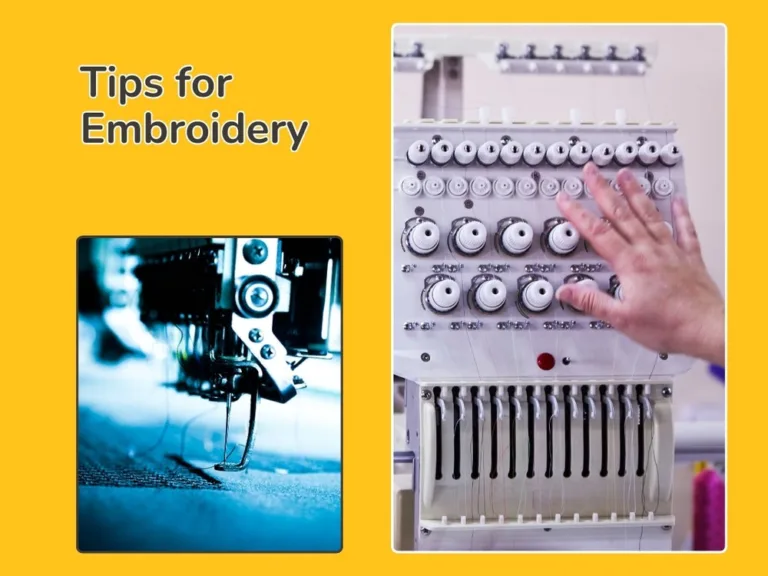
Embroidery Tips
I’ve gathered a few handy tips to help elevate your machine embroidery skills.
These small insights can save you time, reduce frustration, and—hopefully—spare a few needles along the way!
Choosing the Right Needle & Thread for Fabric
You might be thinking, “Does it really make a difference which needle and thread I choose?”
The answer is a resounding yes! Here’s why it matters:
Lightweight fabrics:
Opt for finer needles (like size 65/9 to 75/11) paired with lighter threads. This helps avoid unwanted holes and keeps delicate fabrics looking flawless.
Medium-weight fabrics:
A balanced setup works best—use needles in the 75/11 to 90/14 range with standard embroidery thread for smooth, consistent results.
Heavy fabrics:
Time to bring in the heavy hitters. Larger needles (90/14 to 100/16) and strong, durable thread are ideal for thick materials like denim or canvas.
Think of it this way:
Matching your needle and thread to your fabric is like choosing perfect dance partners—when they move in sync, the outcome is simply beautiful!
Adjusting Speed for Your Projects
We all love a good speed boost, but when it comes to embroidery, faster isn’t always the best choice. Here’s how to adjust your speed for different types of projects:
Simple Designs
Speed: 800-1000 stitches per minute (SPM)
Use: Basic shapes, large fills, or simple logos.
Intricate or Detailed Designs
Speed: 500-700 SPM
Use: Small text, fine details (like Bible verses), or complex images.
Metallic Threads
Speed: 400-600 SPM
Use: When using metallic or specialty threads that are prone to breakage.
Thick Fabrics (e.g., sweatshirts, hats)
Speed: 500-700 SPM
Use: Helps prevent thread breaks and fabric distortion.
Thin/Delicate Fabrics (e.g., silk, satin)
Speed: 400-600 SPM
Use: Prevents puckering or damage to delicate fabrics.
Appliqué
Speed: 600-800 SPM
Use: Ensures precision when stitching around fabric pieces.
Projects
Machine Speed
Simple Designs
800 – 1000 SPM
Detailed Designs
500 – 700 SPM
Metallic Threads
400 – 600 SPM
Thick Fabrics
500 – 700 SPM
Thing Fabrics
400 – 600 SPM
Appliqué
600 – 800 SPM
Tips: Start slower than you think you need to. You can always increase speed as you get more comfortable with a design or fabric.

Embroidery Popular Troubleshooting
Even experienced embroiderers run into trouble sometimes. Here’s how to handle a few common machine embroidery issues:
Broken Threads
If your thread keeps snapping, try the following:
Inspect your needle for burrs or damage
Make sure the thread is correctly threaded through the machine
Check your upper thread tension—it could be too tight
Thread Tangling (a.k.a. The Dreaded Bird’s Nest)
If you’re dealing with a mess under your fabric, consider these tips:
Hold the thread tails at the beginning of stitching
Clean your bobbin case and area regularly
Make sure you’re using the correct bobbin type for your machine
Design Alignment Issues
When your embroidery looks more like a Picasso than planned, check:
Your hooping—fabric should be tight and smooth
That you’ve chosen the right stabilizer for your fabric type
Design placement—ensure it’s properly centered before stitching
Practice Makes Progress
Don’t get discouraged! Every stitch teaches you something. Here are some fun ways to improve:
Make a sampler to experiment with stitch types and densities
Test your skills on different fabric scraps
Take on slightly more complex designs as you build confidence
Remember, each hiccup is part of the learning curve. Stay patient, stay curious, and enjoy the creative journey!
Embroidery Groups Online
We’re all in this together! Connecting with fellow embroidery enthusiasts can truly elevate your experience. Here’s why becoming part of an online community is worth it:
Discover fresh ideas and project inspiration
Get help troubleshooting issues from seasoned embroiderers
Keep up with the latest tools, trends, and techniques
Celebrate your wins—and learn from the not-so-perfect stitches
Some trusted online communities to check out:
r/MachineEmbroidery on Reddit – A vibrant space for sharing advice and showing off work
Machine Embroidery Enthusiasts on Facebook – Great for quick tips and camaraderie
EGA (Embroiderers’ Guild of America) – Offers both local chapters and online groups
Needle ‘n Thread Forum – Ideal for in-depth, topic-specific conversations
Embroidery.com – Forums, how-tos, supplies, and a supportive community of both machine and hand embroiderers
Every embroidery expert started as a curious beginner. Keep practicing, stay inspired, and most importantly—enjoy the creative journey. Your next project might just be your masterpiece!
Easy Embroidery Projects
Let’s dive into a few fun and beginner-friendly projects that will help you sharpen your embroidery skills. These ideas are practical, rewarding, and perfect for building confidence as you learn.
Handkerchiefs
A timeless classic that’s perfect for starting out:
Small size means quick, satisfying results
Flat surface makes it easy to practice different stitches
Great for personal touches like initials or simple motifs
Pro tip: Go with cotton handkerchiefs to start—they’re easy to stitch on and widely available.
Pillowcases
A slightly larger canvas to stretch your creativity:
Begin with small corner embellishments and work up to full patterns
Practical and beautiful—perfect for daily use
Ideal for testing different stabilizers on various fabrics
Tip: Place your design so it’s visible when the pillow is on display—makes all the difference!
Tote Bags
Totes are both trendy and beginner-friendly:
Durable fabric forgives little mistakes
Practice aligning designs on three-dimensional objects
Makes thoughtful, functional gifts for loved ones
Tip: Begin with a design on the front panel. As your skills improve, consider embellishing the sides or handles!
Each of these projects offers something new to learn while letting you enjoy the process. Choose one and make it your own!
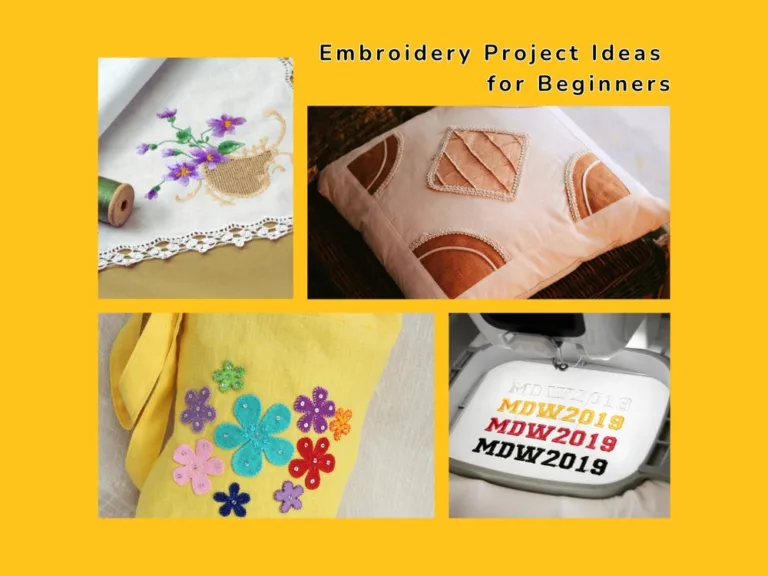
Embroidery Patterns for Beginners
Now let’s look at some beginner-friendly design ideas that are perfect for getting started. Don’t worry about complexity—everyone starts somewhere, and you’ll be tackling detailed designs in no time!
Floral Designs
Floral motifs are a favorite in embroidery—and with good reason:
They range from super simple (like daisies) to beautifully detailed (like roses)
Offer a great way to experiment with various stitch techniques
Look fantastic on almost anything, from clothes to linens
Tip: Begin with a cheerful sunflower or daisy. Once you’re confident, try your hand at layered bouquets or stylized arrangements.
Monograms
Perfect for adding a personal touch and sharpening your lettering skills:
Start with clean, simple block letters before diving into fancy script
Explore different fonts to find what suits your style
Add flourishes or decorative frames as your skills grow
Tip: Always double-check the spelling before you start stitching—one small mistake can mean starting over!
Simple Geometric Shapes
Modern and stylish, geometric patterns are also excellent practice:
Begin with basic forms like circles, squares, and triangles
Focus on maintaining clean edges and even spacing
Combine shapes to build more intricate patterns as you go
Tip: Try stitching a fun polka dot pattern on a pillow or add layered concentric circles to a tote for a modern look.
These designs are great starting points to help you build both skill and confidence—plus, they look amazing when finished!
Embroidery: Your First Step
As we wrap up this beginner’s guide to machine embroidery, I hope you’re feeling inspired and eager to dive into your creative journey. Mastery comes with time, patience, and plenty of joyful experimentation.
So go ahead—thread your needle, fire up your machine, and let your imagination lead the way. This is just the beginning, and I’m excited to see the amazing pieces you’ll craft.
If you’re ready to take on bigger challenges, check out our embroidered products for ideas. Projects like sweatshirts and hoodies offer the perfect blend of comfort and creativity—plus, they make wonderful personalized gifts or standout additions to your wardrobe.
FAQs About Machine Embroidery For Beginners
1. How does an embroidery machine differ from a regular sewing machine?
While both machines can create stitches, they serve different purposes:
- An embroidery machine is designed specifically to create decorative designs on fabric. It can automatically stitch complex patterns based on digital designs.
- A regular sewing machine is primarily used for constructing garments and home décor items. It creates straight or zigzag stitches for joining fabric pieces.
Some machines combine both functions, allowing you to switch between sewing and embroidery. If you’re just starting out, a dedicated embroidery machine might be easier to learn on.
2. What stabilizer should I use for my project?
Selecting the right stabilizer depends on your fabric and design:
- For lightweight, woven fabrics: Use tear-away stabilizer
- For knits or stretchy fabrics: Opt for cut-away stabilizer
- For delicate fabrics or when you don’t want stabilizer to show: Try water-soluble stabilizer
Remember, it’s better to use a slightly heavier stabilizer than one that’s too light. You can always experiment with scraps to find the perfect combination for your project.
3. Why does my thread keep breaking?
Thread breakage can often be traced back to a few common causes:
Incorrect threading: Double-check that the machine is threaded properly.
Tension issues: Adjust the upper thread tension to prevent breakage.
Dull or damaged needle: Regularly replace needles to keep stitches clean and smooth.
Poor-quality thread: Invest in high-quality embroidery thread to avoid frequent breakage.
If issues persist, clean your machine and check the bobbin area for lint buildup.
4. What’s the best way to transfer designs to my embroidery machine?
The method you use depends on your machine, but here are the most common ways:
USB drive: Many machines come with a USB port to transfer designs easily.
Direct connection to a computer: Some machines can connect directly to a computer for design transfer.
Memory cards: Older machines may require special memory cards to upload designs.
Refer to your machine’s manual for specific instructions, and make sure your design is in a compatible format.
5. Can I embroider on any fabric?
Most fabrics can be embroidered, but some are easier to work with than others:
Woven fabrics like cotton and linen are ideal for beginners.
Stretchy fabrics like jersey can be embroidered with the right stabilizer.
Delicate fabrics (like silk) or thick materials (like leather) require special techniques.

Sophia Williams
Meet Sophia Williams, the 26-year-old wordsmith behind RevoGuy LLC's heartwarming content. This self-taught writer turned her passion for family stories into a career, weaving tales of love and laughter from her bustling Wyoming home office. With six years in the content creation world, Sophia has mastered the art of making Gen X and millennials alike misty-eyed over their morning coffee. When she's not crafting the perfect emotional hook, you'll find her attempting DIY projects or coaching little league. Her gift-giving advice is significantly more reliable than her home improvement skills.
Recent Posts
Recent Comments
Archives
Categories
Categories
- Accessories (3)
- Christmas's Day (13)
- Custom Product (55)
- Halloween (5)
- Women (36)
- Sweatshirts & Hoodies (62)
Hottest Deals
-
Sale Product on sale
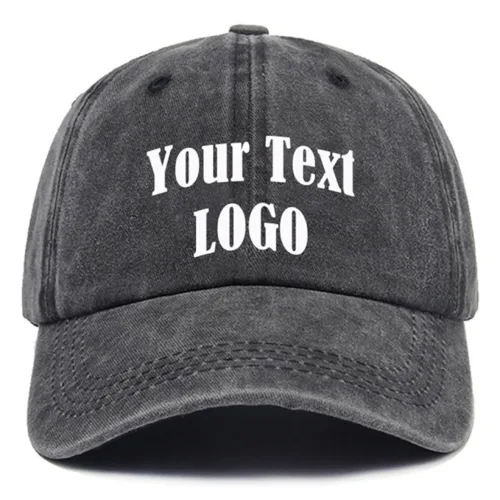 Personalized Embroidered Hat, Custom Text, Custom Logo, Custom Your Image
Personalized Embroidered Hat, Custom Text, Custom Logo, Custom Your Image$33.00Original price was: $33.00.$27.00Current price is: $27.00. -
Sale Product on sale
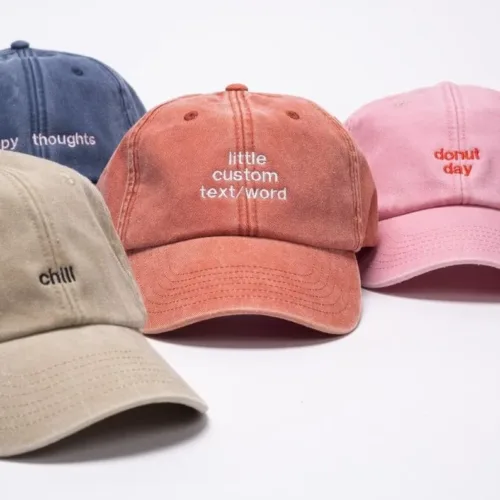 Personalised Vintage Cap - Custom Embroidered Unisex Cotton Dad Hat with Personalized Text
Personalised Vintage Cap - Custom Embroidered Unisex Cotton Dad Hat with Personalized Text$14.00Original price was: $14.00.$12.00Current price is: $12.00. -
Sale Product on sale
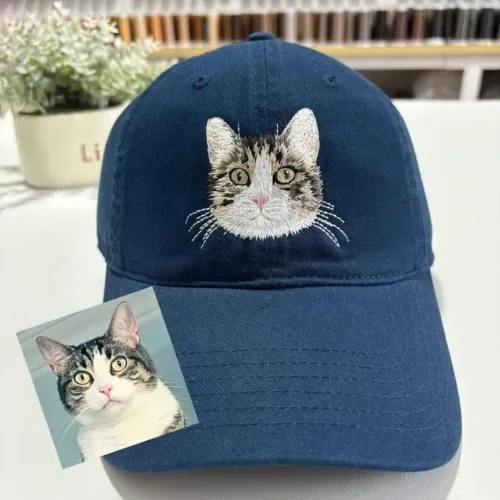 Personalized Embroidered Cat Hat, Custom Dog Hat, Custom Hat Vintage Baseball
Personalized Embroidered Cat Hat, Custom Dog Hat, Custom Hat Vintage Baseball$33.00Original price was: $33.00.$27.00Current price is: $27.00. -
Sale Product on sale
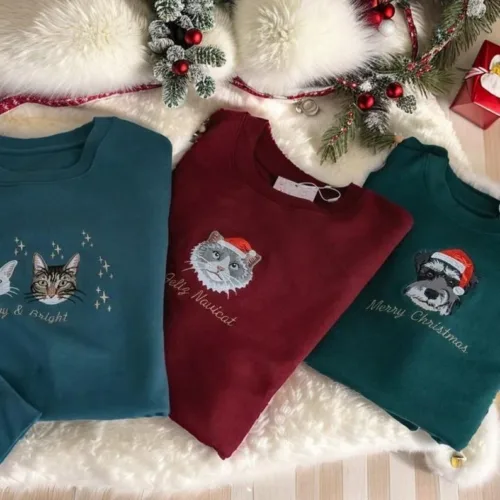 Christmas Edition Custom Pet Portrait Embroidered Sweatshirt$29.00 – $45.00Price range: $29.00 through $45.00
Christmas Edition Custom Pet Portrait Embroidered Sweatshirt$29.00 – $45.00Price range: $29.00 through $45.00

